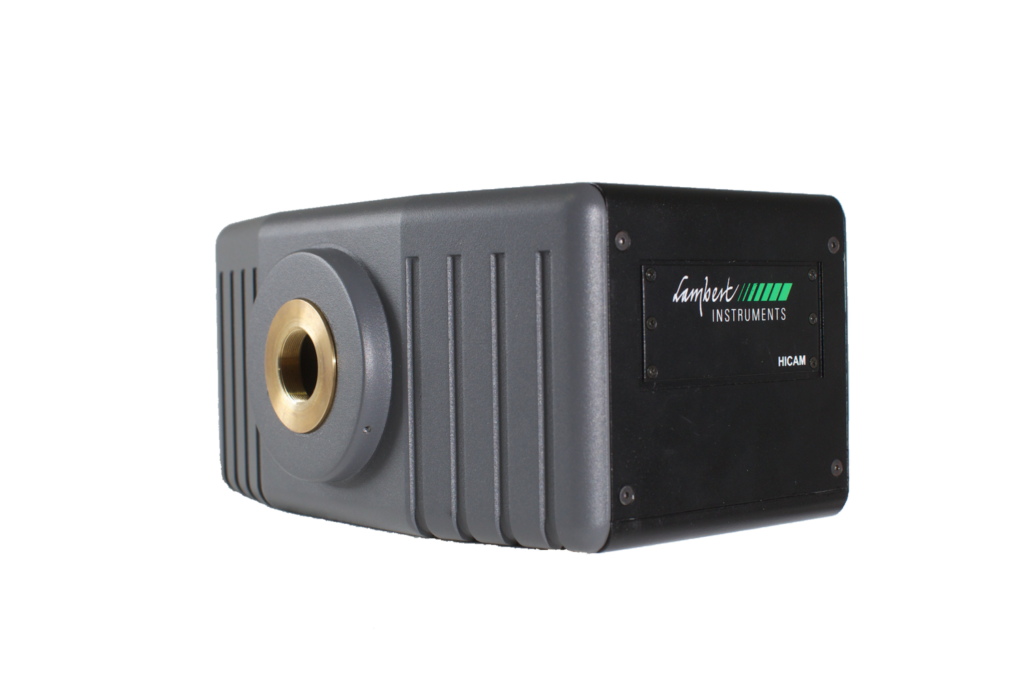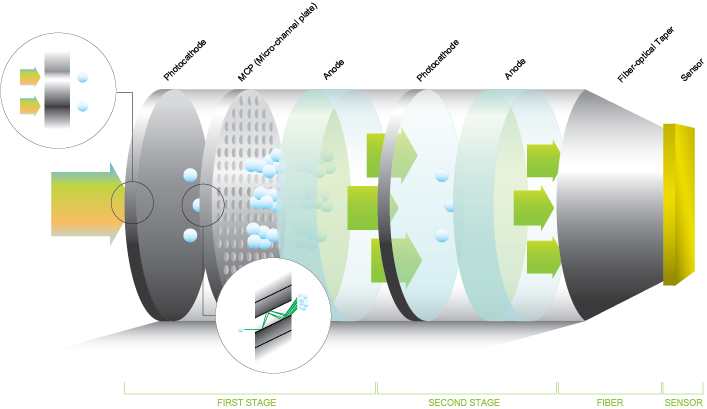< Back
Intensifier Control
Long-term high-speed recording with multiple cameras to capture in flight testing data
Flight testing provides invaluable data for the aerospace sector. This data is instrumental in enhancing aircraft efficiency, safety, and effective utilization. Ensuring the reliable capture of data is vital, preventing the need for costly additional flights and mitigating the risk of losing months’ worth of program data.
Flight test instrumentation (FTI) are those tools used to acquire, store, and transmit flight test data,and are therefore a vital part of the aerospace sector. These tools require a high level of maturity because they must be reliable and accurate. Amid commercial pressures to expedite aircraft certification cycles and reduce costs, flight test engineersto enhance FTI and data acquisition networks— striving for innovation that offers increased flexibility and precision with user-friendly control.

Among FTIs, tandem imaging devices can be used to observe the behavior of moving objects and mechanical parts during a test flight.
But, using a multiple camera set-up in flight poses many challenges.
Foremost, when using multiple cameras, they need to be synchronized so they can operate simultaneously. Such a set-up requires a software interface that can integrate multiple cameras while allowing recording set-up prior to the onset of the flight. During the flight, the system must be able to provide reliable recording and data storage.
Moreover, such systems must be ruggedized to withstand the strong vibrations that occur in-flight to fulfill aeronautical standards.
Lambert Instruments’ STAMINA system supports the aerospace sector with a multi-camera recording solution. STAMINA combines advanced hardware with an easy to use, yet highly customizable, software platform to offer a complete solution for your imaging challenges.
STAMINA is compatible with a wide range of high-speed cameras. With the complete imaging system, it becomes possible to view and record up to 9 cameras simultaneously.
With Stamina, recordings can be synchronized, and all image data is directly streamed to the solid storage, for long-term streaming. With the external Application Programming Interface (API), Stamina can be further customized and integrated in your existing setup. Through the API, you have access to device settings, recording parameters, image data, and more. Whilst the Stamina software is the heart of the system, the hardware can be customized to comply with your own standards and regulations.
Stamina is a completely customizable imaging solution that brings an answer to the latest FTI Imaging applications.
Intensified High-Speed Cameras
Normal consumer cameras operate very well in day-light, or room ambient lighting conditions. However, when you want to make a snapshot of a fast moving object, exposure-time has to be shortened to obtain a sharp image. This comes with a cost; images are much darker when using a short exposure time. At a certain threshold, the attenuation has to be compensated. This could be done by increasing the light (by using a flash), or by improving the photo-sensitivity of the camera. In high-speed cameras this effect is even stronger.
To get clear images in high-speed cameras, an object has to be illuminated with a high intensity light-source. The higher the frame rates the shorter the exposure time per frame, the higher the intensity of the light-source must be. In many applications increase in illumination is an adequate method to compensate the shorter exposure times. However, in some applications the object itself is emitting light, or is influenced by the light-source. In combustion research, for example, or imaging of dynamic phenomena in fluorescent biological cells, or low intensity PIV, light intensities are too low to record with conventional high-speed cameras. In applications like microfluidics, the heat generated by a powerful light source can have a tremendous effect on liquid flows.
To apply high-speed imaging in the forementioned situations, Lambert Instruments has developed intensified high-speed cameras and high-speed intensifying camera attachments. The special two stage high-speed image intensifiers in these products amplify the input light to a typically 10000 times higher level on the output. This makes it much easier to distinguish an image from the noise. Furthermore, the gating feature of the image intensifier makes it possible to capture even the fastest objects without motion blur.

Camera Link
Camera Link is a serial communication standard. It has three main configurations: Base, medium and full.
Base Configuration
This configuration requires one cable and has a data throughput of 2.04 GBit/s.
Medium Configuration
This configuration requires two cables and it can transfer twice as much data as the base configuration. The maximum data throughput of this configuration is 4.08 GBit/s.
Full Configuation
This configuration also requires two cables and it has a maximum data throughput of 5.44 GBit/s.

CoaXPress
GigE Vision is a framework for transmitting images over an Ethernet connection. It consists of protocols that define how to configure a camera and to transfer the image data. Every computer with a fast Ethernet card is compatible with the GigE Vision framework. So GigE Vision requires only an ethernet card, whereas CoaXPress and Camera Link require a framegrabber.
The maximum transfer speed of a GigE Vision camera (assuming a gigabit Ethernet card in the computer) is 1000 Mb/s.

CoaXPress
CoaXPress (CXP) is a communication standard for imaging data. It transfers data over one or multiple coaxial cables. The main strengths of this standard are its high transfer speeds and the long cable lengths. CXP can also power cameras with Power-over-CXP, removing the need for a dedicated power supply for the camera.
CoaXPress
Transfer Speeds
Because of its high transfer speeds, CXP is ideal for streaming high-speed imaging. Each CXP cable can transfer up to 6.25 Gbps. Our cameras have 4 CXP ports for a total transfer speed of up to 25 Gbps.
Computer Interface
You need a frame grabber to capture the data that is transferred over CXP. A frame grabber is an expansion card for a computer that captures the incoming data and displays it on the screen or stores it on the computer. Most frame grabbers offer a software development kit (SDK) to develop your own specialized image acquisition software.
More Information
For more information about CoaXPress, please visit the official CoaXPress website.

Dual-Stage Image Intensifier
In very low-light situations or when a very short exposure time is required, a dual-stage image intensifier may be required. The first stage is the same as a single-stage image intensifier; it has a micro-channel plate that multiplies the electrons emitted by the photocathode. The second stage is often referred to as a booster. This stage does not have a micro-channel plate, it multiplies the incoming photons without the saturation characteristics of a micro-channel plate.
DUAL-STAGE IMAGE INTENSIFIER WITH FIBER-OPTIC COUPLING
For FLIM in the lifetime range of 0 ps to 1 ms we provide S20 (UV) and SuperS25 (visual) image intensifiers. For increased quantum efficiency of the photocathode in the visual part of the spectrum in this lifetime range, a GaAs intensifier is available. For near-infrared applications up to about 1100 nm an InGaAs photocathode is available.
The graph to the right shows the spectral sensitivity of these photocathodes.



